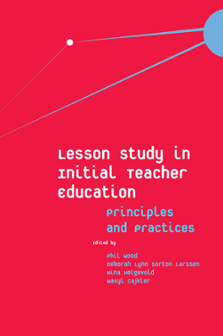
Index
Lesson Study in Initial Teacher Education: Principles and Practices
ISBN: 978-1-78756-798-6, eISBN: 978-1-78756-797-9
Publication date: 29 November 2019
Citation
(2019), "Index", Wood, P., Larssen, D.L.S., Helgevold, N. and Cajkler, W. (Ed.) Lesson Study in Initial Teacher Education: Principles and Practices, Emerald Publishing Limited, Leeds, pp. 215-220. https://doi.org/10.1108/978-1-78756-797-920191018
Publisher
:Emerald Publishing Limited
Copyright © 2020 Phil Wood, Deborah Lynn Sorton Larssen, Nina Helgevold and Wasyl Cajkler
INDEX
Note: Page numbers followed by “n” indicate footnotes.
- Prelims
- Chapter 1: International Changes and Approaches in Initial Teacher Education
- Chapter 2: An Introduction to Lesson Study
- Chapter 3: Lesson Study in ITE: A Family of Approaches
- Chapter 4: Whose Learning in ite Lesson Study? Gaining the Most from Lesson Study in Relation to Learning
- Chapter 5: The Role of Collaborative Planning: How to Use Joint Planning as a Learning Process in Lesson Study
- Chapter 6: The Role of Observation in ITE Lesson Study
- Chapter 7: Capturing Other Perspectives: Lesson Artefacts, Pupil Voice and Participatory Potential in ITE Lesson Study
- Chapter 8: Reflective Practice and the Lesson Study Process in Initial Teacher Education
- Chapter 9: Student-Teachers’ Written Reports About Their Own Learning Processes from Lesson Study
- Chapter 10: Tools for Helping Student-Teachers Learning the Complex Work of Teaching in Lesson Study Cycles
- Chapter 11: Lesson Study Partnerships in Initial Teacher Education
- Chapter 12: The Thorny Issue of Time
- Chapter 13: Normalisation Process Theory in ITE Lesson Study
- Chapter 14: The Wider Perspective on Lesson Study: Developing a Holistic View of Practitioner Development Through Pedagogic Literacy
- Chapter 15: The Future of Lesson Study in Initial Teacher Education
- Index